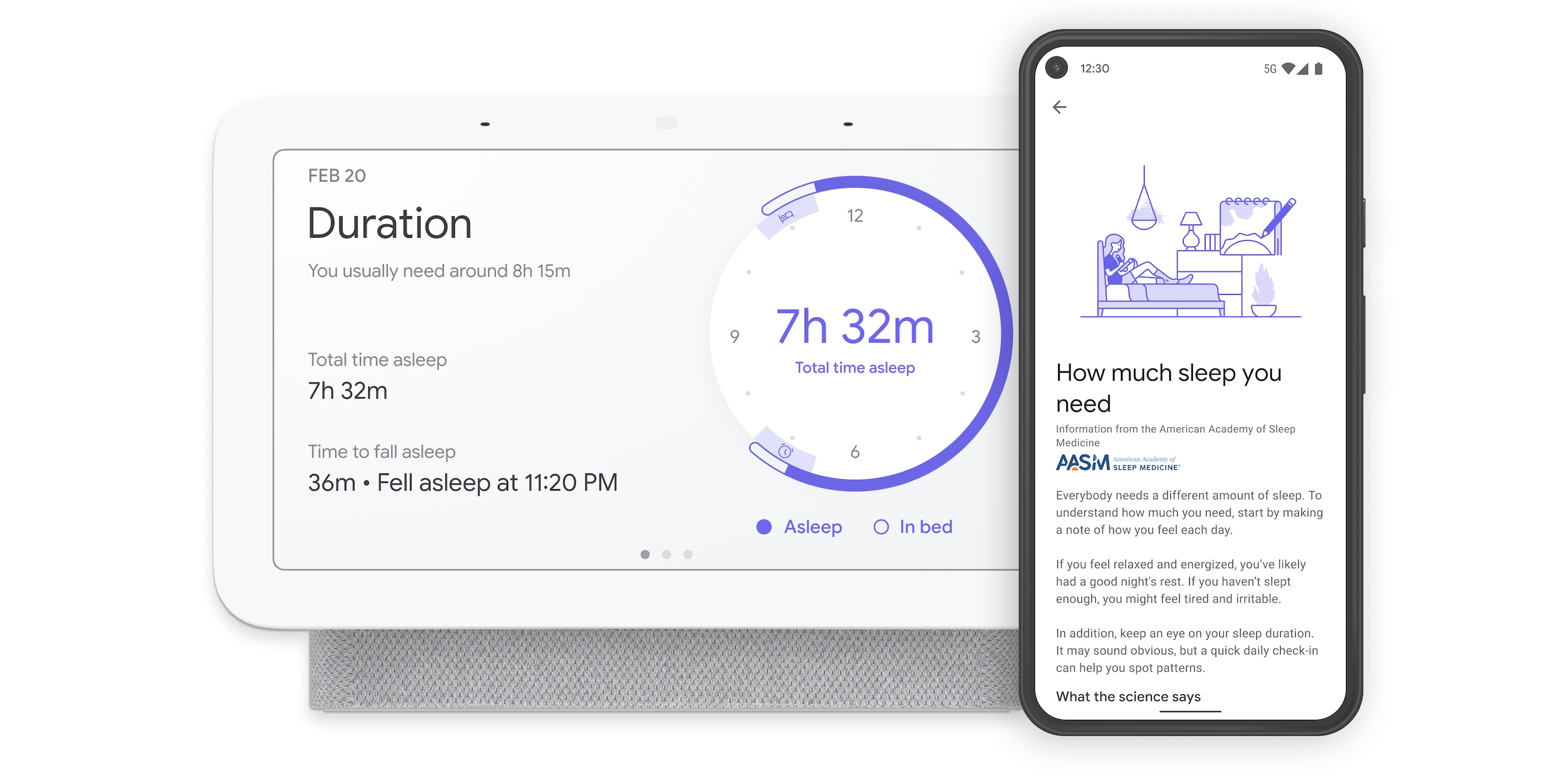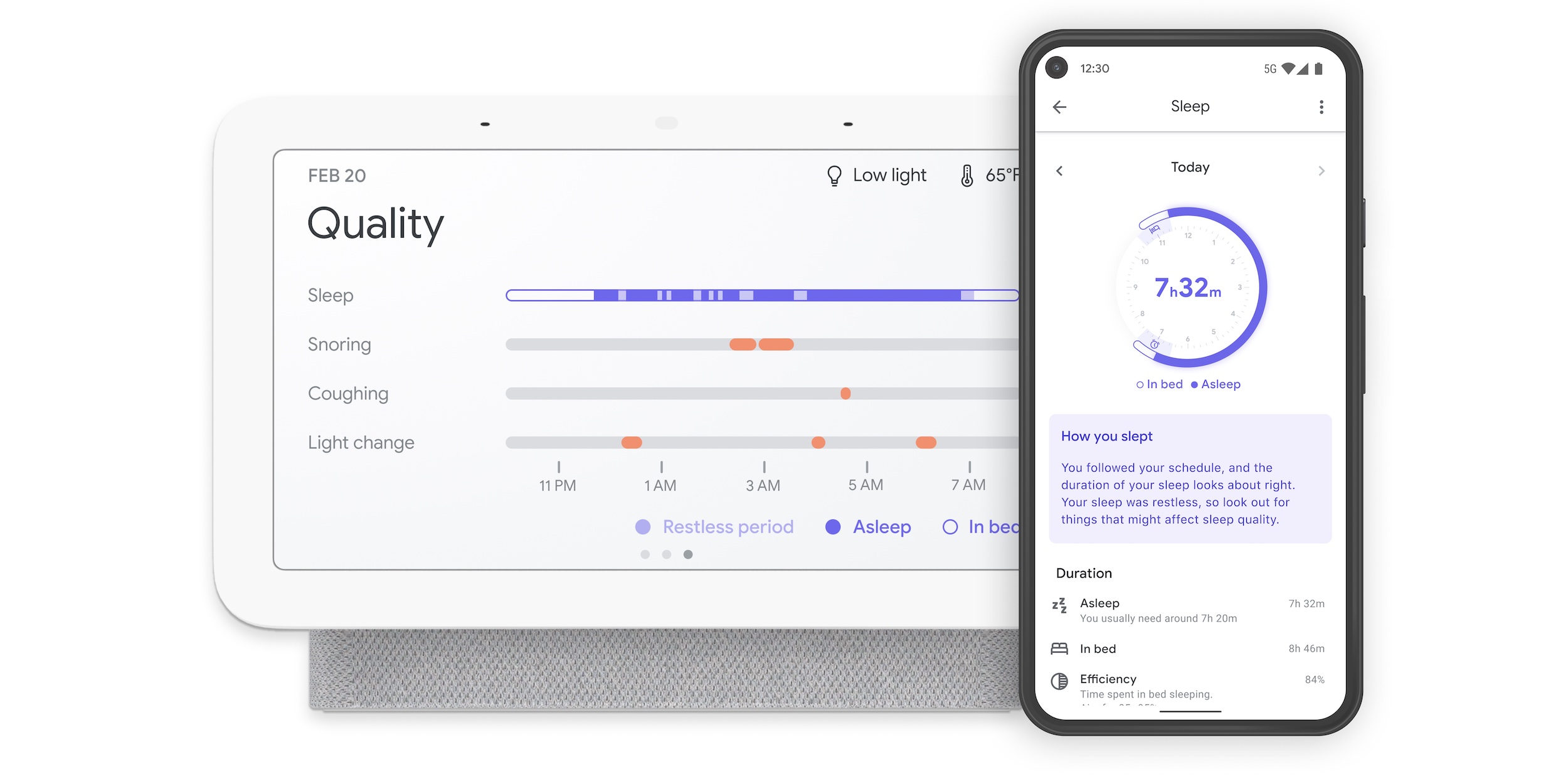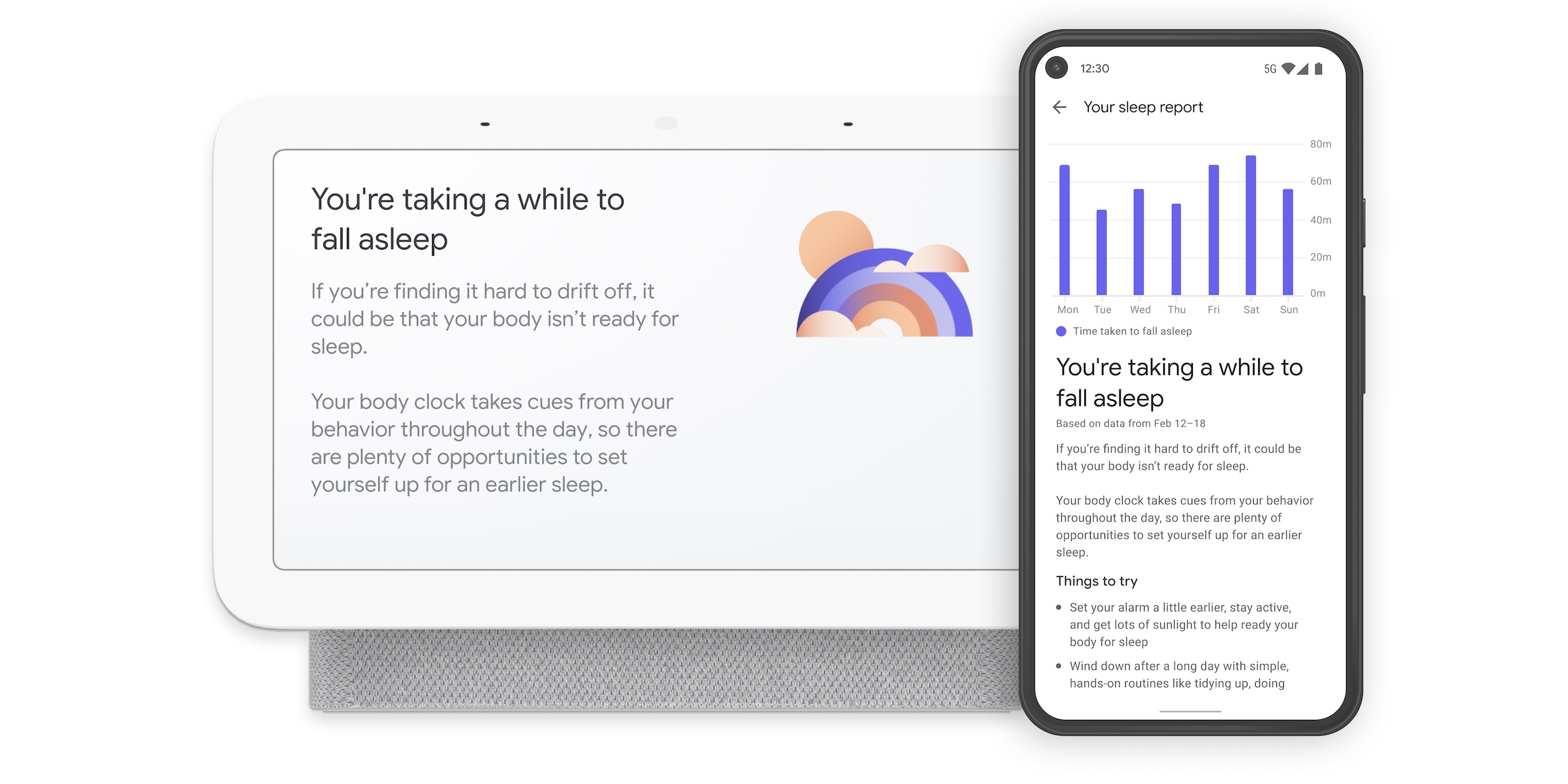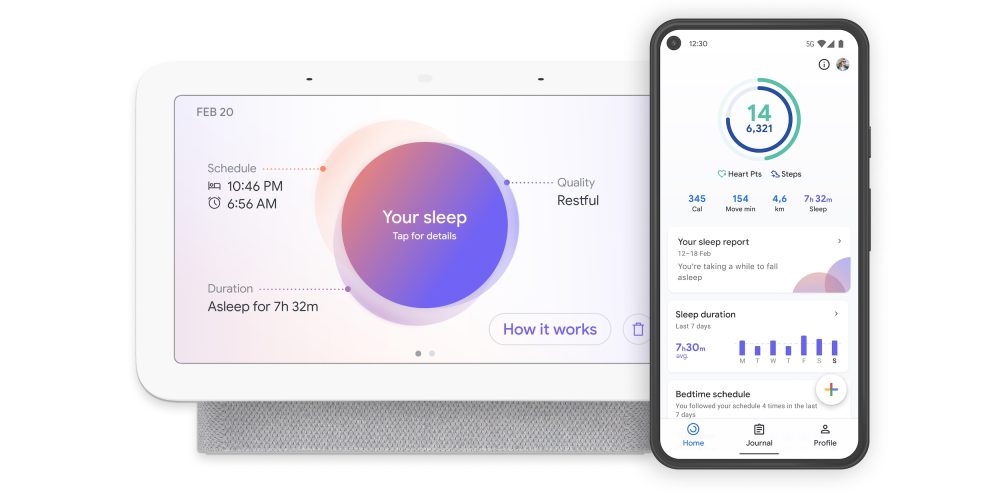
In deciding to not put a camera on what was initially called the Home Hub, Google made its first Assistant Smart Display ideal for nightstands. The new 2nd-generation Nest Hub is further embracing that role with Sleep Sensing to track your rest. Otherwise, it looks the same and is not that much more expensive than the original.
New Nest Hub design
Google has retained the floating display design of the Nest Hub and larger Hub Max. The 7-inch screen (1024 x 600) is still surrounded by bezels that are rather thick and feature three cutouts at the top. That said, a new edgeless glass display gets rid of the raised perimeter lip to make cleaning easier.
The company told 9to5Google that the white borders help mimic a real-life photo frame, though the 2nd-gen unit benefits from a slightly lighter middle piece. It’s available in Chalk (white), Charcoal (black), Sand (pink), and a new Mist (blue). Those colors are dyed in a process that uses less water, while the entire thing is made with 54% post-consumer recycled plastic.
Inside, a machine learning chip allows your most common Assistant commands to be processed faster locally. The Nest Hub has 50% more bass — with a 1.7-inch driver — than the original for richer sound, as well as a third far-field microphone. There’s also a Thread radio that makes possible Project Connected Home over IP (CHIP) support to make it a better smart home hub, though the capability is not yet live at launch.
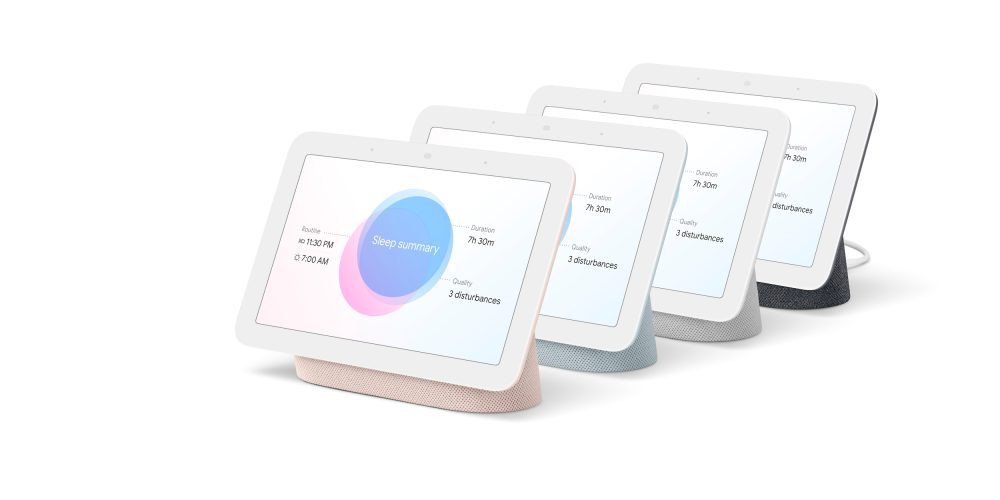
The biggest addition is a hidden Soli radar chip located in the upper-right corner. At launch, it allows you to play/pause media by tapping in the air, with Google not yet supporting the ability to skip tracks. However, there is a wave gesture to snooze alarms, which brings us to the biggest selling point of Google’s latest Smart Display.
Nest Hub Sleep Sensing
Sleep quality is a top concern among adults, but the company found that today’s bedroom gadgets haven’t caught on because people forget to charge smartwatches/fitness trackers, while others don’t like wearing jewelry to sleep. Meanwhile, 20% of original Hubs were placed in bedrooms.
This 2nd-gen Nest Hub has “Sleep Sensing” powered by the Soli technology that first debuted on the Pixel 4 and was later used on the new Nest Thermostat for screen wake. Google set out to make sleep tracking, which is opt-in, more effortless and help people make nightly improvements.
Sensors analyze your sleep based on movement and breathing, while also identifying disturbances (coughing, snoring, light fluctuations, and temperature changes) that make an impact. Soli is an ideal technology for this purpose because it precisely tracks movement at both macro (limbs flailing) and micro (chest moving up/down as you breathe) levels.

Soli is not a camera that can “see” or identify you, with the Nest Hub only generating movement graphs that — along with audio data — are processed locally and do not leave your device. Only high-level sleep occurrences/events, such as number of coughs and snore minutes, are sent to Google, and a night’s results can be easily deleted in the morning. Meanwhile, you can disable cough and snore detection but retain sleep tracking.
To use Soli for this purpose, Google had thousands of people submit over 100,000 nights to create the sensing algorithms. Results were validated against sleep (polysomnography) studies, as well as consumer and clinical-grade sleep trackers. Nest Hub’s performance matched or surpassed those existing offerings.
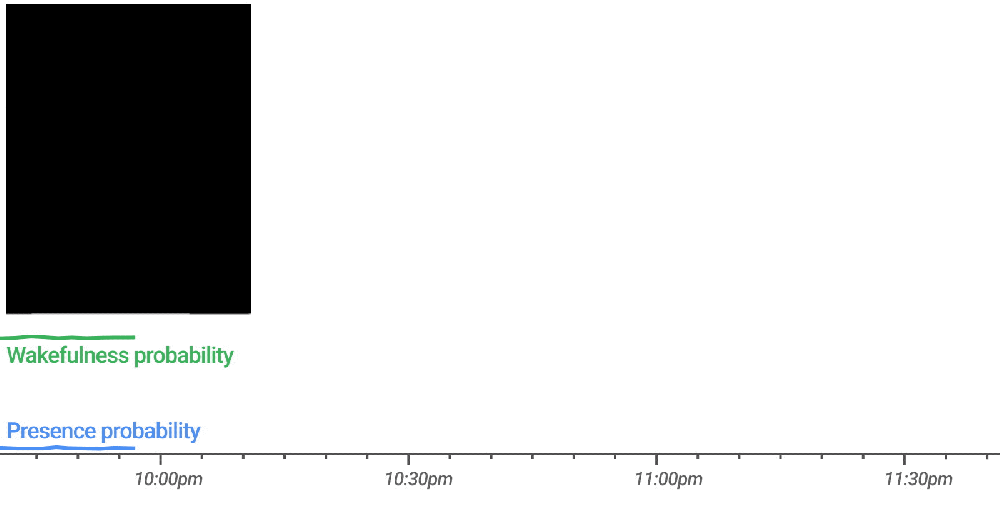
The custom ML model efficiently processes a continuous stream of 3D radar tensors (summarizing activity over a range of distances, frequencies, and time) to automatically compute probabilities for the likelihood of user presence and wakefulness (awake or asleep).
The Sleep Sensing experience starts with a calibration tutorial that tells you to point the Smart Display at your body. It can be placed 1-2 feet away from you, with Google emitting low-energy radar waves to create a tracking bubble that ignores everything outside it.
When you wake up in the morning, you can say “Hey Google, how did I sleep?” or tap the “Sleep Summary” button on screen. A graphic that uses overlapping circles will note duration, schedule (consistency), and the number of disturbances/rest quality.
Good morning. You slept for 5 hours and 15 minutes. It looks like you went to bed and woke up a little late, and had quite a short sleep with some disturbances.
The three-page “Sleep details” view provides a granular breakdown. “Quality” uses timelines to note how much light was in your room and the temperature, which the Nest Hub now has a sensor for — at the moment, it’s just for sleep tracking. Google will also identify snoring, coughing, and changes in light. The sleep bar notes when you’re asleep and restless periods.
There are weekly summaries to quickly see breathes per minute (RPM), the number of minutes you snored, and cough count. All this data syncs with Google Fit, as we reported, and can be seen on your Android or iOS device. The company worked with the American Academy of Sleep Medicine to provide sleep science and guidance to users. That said, it’s “not intended to diagnose, cure, mitigate, prevent or treat any disease or condition.”
Besides showing your sleep stats, Google will analyze them to find issues and suggest actionable recommendations that are personalized to you. This might include setting up a Relaxation routine and setting reminders. Over time (14 or more days), the Nest Hub will understand your sleep patterns and recommend an ideal schedule.
Nest Hub pricing
Sleep Sensing will be available as a “free preview” until next year. Google has not yet determined how it will charge users since Fitbit, which offers a Premium subscription, was only recently acquired. It’s exploring how best to integrate with the existing sleep tracking features. Plenty of warning will be given if there are changes.
The new 2nd-generation Nest Hub costs $99.99 in only a $10 price increase compared to the current model. Google Store pre-orders start today in the US, Canada, UK, Germany, France, and Australia, with a launch on March 30.
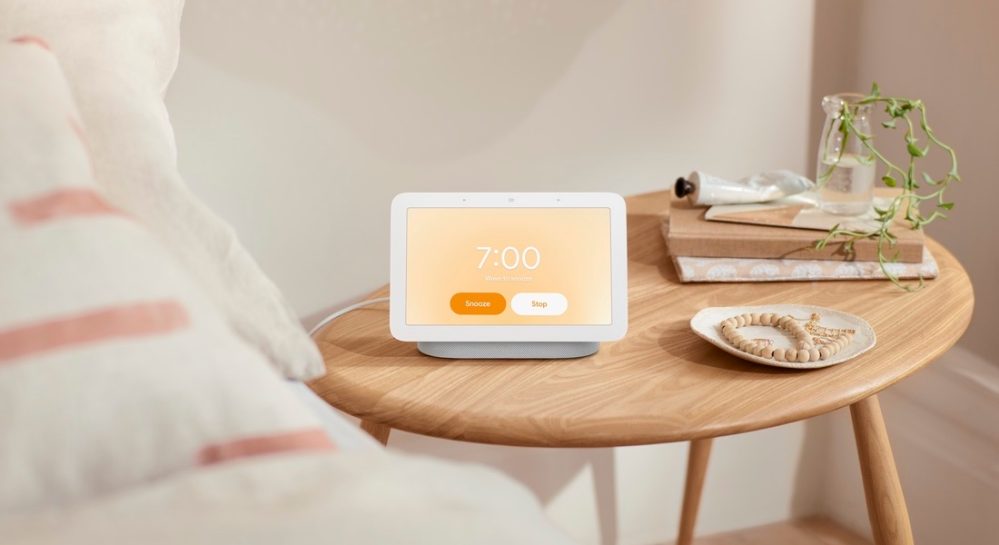
Author: Abner Li
Source: 9TO5Google



